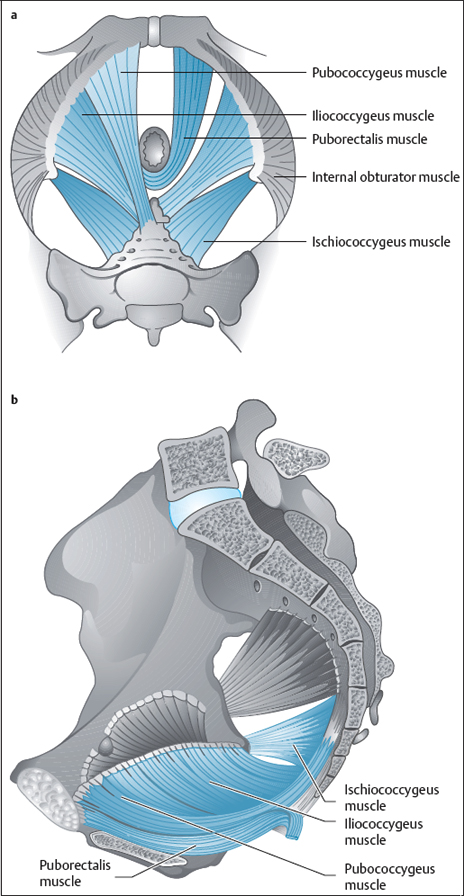Anatomy and Physiology of the Pelvic Floor Biology Diagrams The Pelvic Floor - Overview and Function [edit | edit source] The pelvic floor is a dome-shaped muscular sheet separating the pelvic cavity above from the perineal region below. This cavity encloses the pelvic viscera - bladder, intestines, and uterus(in females). The main function of the pelvic floor muscles are: The pelvic floor is a unique anatomical location where the balance of the different pressures, either visceral, muscular, or liquid play a fundamental role in the physiological functioning of all the structures contained therein. The pelvis is bounded superiorly by the imaginary line between the pubis and sacral promontory and inferiorly as the line between the ischial tuberosity and the apex

Figure 43 illustrates the muscles of the pelvic floor. Pelvic floor work is often performed intrarectally or intravaginally and is therefore usually beyond the scope of practice for most manual therapists. However, some pelvic floor musculature (coccygeus and levator ani) are partially accessible from the outside, inferior to the piriformis

Muscles of the pelvic floor: Anatomy and function Biology Diagrams
Pelvic floor muscle training versus no treatment, or inactive control treatments, for urinary incontinence in women: a cochrane systematic review abridged republication. European Journal of Physical and Rehabilitation Medicine, 54(3), 416-432. ↑ Sapsford, R. (2001). Rehabilitation of pelvic floor muscles utilizing trunk stabilization. Learn about the muscles that form the lower limit of the true pelvis and support the pelvic organs. Find out their attachments, blood supply, innervation, function, embryology, and clinical significance. Learn about the pelvic floor muscles that support your core organs and help with bodily functions. Find out how to keep them strong and healthy, and what problems can arise from weak or tight muscles.

Learn about the anatomy and functions of the pelvic floor, a funnel-shaped structure that supports the pelvic viscera and maintains urinary and faecal continence. The pelvic floor consists of three main components: levator ani, coccygeus and fascia coverings.

Pelvic Floor Anatomy Biology Diagrams
Pelvic floor dysfunction refers to a set of indications and symptoms caused by faulty pelvic floor muscle activity. The pelvic floor muscles in women support the urethra, vagina, and anal canal. Weakness of these muscles can lead to a lack of structural support for these organs, manifesting as:
